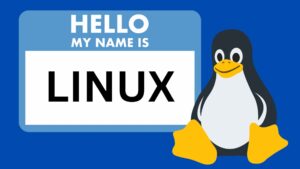At its core, Linux landscape is an open-source operating system kernel. This means that its source code is freely available for anyone to view, modify, and distribute. As a result, Linux has a vibrant community of developers who contribute to its growth and improvement. It is known for its stability, reliability, security, and flexibility.
This guide delves into the intricacies of Linux, guiding you through its history, key features, and practical applications. Embark on this journey to unlock the power of Linux and enhance your computing experience.
Journey Through Linux History
Linux’s roots trace back to the early 1990s when Linus Torvalds, driven by the desire for a free Unix-like operating system, released the first Linux kernel version. Since then, Linux has evolved into a powerful and versatile platform, widely adopted across various devices, from servers to embedded systems.
Key Features that Propel Linux
Several key features have propelled Linux’s success in the computing world:
-
Open-Source Philosophy: Linux’s open-source nature promotes collaboration and transparency, allowing users to contribute to its development and ensuring a dynamic ecosystem.
-
Stability and Reliability: Renowned for its stability and reliability, Linux is the preferred choice for mission-critical systems and servers. Its ability to run for extended periods without reboots makes it a robust foundation for various applications.
-
Security: In the digital age, security is paramount, and Linux excels in this area. With a robust permissions system and constant community scrutiny, Linux provides a secure environment for users and their data.
-
Flexibility and Customization: Linux is highly customizable, allowing users to tailor the operating system to their specific needs. From the desktop environment to the choice of software packages, users have the freedom to create a computing environment that suits them.
Choosing the Right Linux Distribution
Selecting the right Linux distribution (distro) is crucial for your Linux journey. Given the diversity of Linux flavors catering to various needs, it’s essential to find one that aligns with your goals. Consider factors such as user-friendliness, compatibility with your hardware and software, and the availability of support resources.
Windows Server as an Alternative
In addition to Linux options, consider whether a Windows server might be more suitable for your specific needs. Windows Server is a popular choice for enterprise environments and offers compatibility with Microsoft technologies.
Navigating the Linux Landscape
As you delve into the world of Linux, these key aspects will become more apparent. In subsequent chapters, we will explore how to get started with Linux, its basic commands, and gradually delve into more advanced topics. Embark on this open-source journey and discover the power of Linux.
Hierarchical File System Structure
The Linux file system follows a hierarchical structure, with the root directory (“/”) at the top. Key directories include “/home” for user home directories, “/bin” for essential binaries, and “/etc” for configuration files.
File and Directory Navigation and Manipulation
Navigate through directories using the “cd” command. For example, to move to the “Documents” directory within your home directory:
cd ~/Documents
Manipulate files with commands like “cp” to copy and “mv” to move. To copy a file from one location to another:
cp file.txt /path/to/destination/
File Permissions and Ownership
File permissions control access to files. Use the “chmod” command to modify permissions. For instance, to give read and write permissions to the owner of a file:
chmod u+rw file.txt
Ownership matters too. “chown” changes ownership. To change the owner of a file:
chown newowner file.txt
Harnessing the Power of the Command Line
The command line is a powerful interface that opens up a world of possibilities for Linux users. This concise chapter seamlessly introduces you to the basics of the terminal and essential command-line operations.
Introduction to the Linux Terminal
The terminal, or command-line interface (CLI), provides a text-based way to interact with your Linux system. It offers efficiency, flexibility, and the ability to seamlessly perform tasks, navigate the file system, and execute commands.

